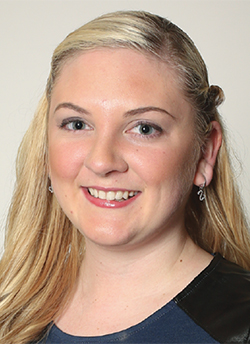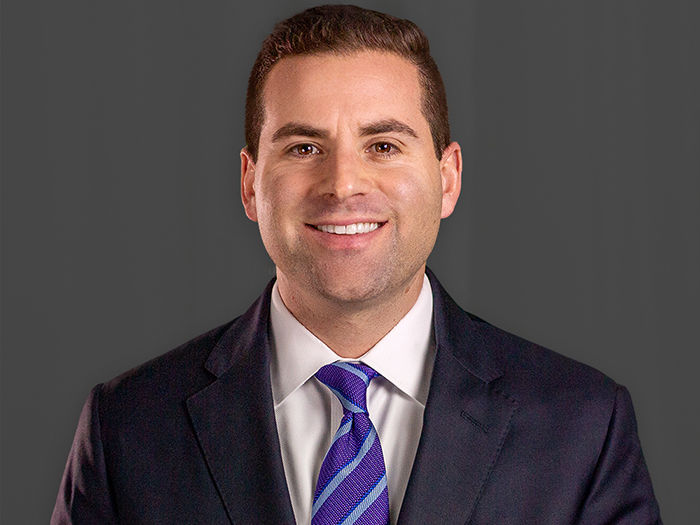2017 Power Broker
Rising Stars Earn a Seat at The Table

See the complete list of 2017 Power Broker® Rising Stars.
Marcus Henthorn became an insurance broker the way many have for generations. A successful family member sat him down while he was still in high school to encourage him to consider the opportunities.
He took the advice and interned with Arthur J. Gallagher & Co. in his final two summers of college. Then, he joined the brokerage giant full time after graduation. He’s worked there ever since.
Today, at 32, he is area assistant vice president managing public sector accounts.
Henthorn’s steady dedication earned him a spot on our 2017 Power Broker® “Rising Stars” list along with 71 other insurance professionals. Rising Stars are Power Broker® winners or finalists who are under the age 40.
Since the launch of this category in 2009, more than 325 brokers under 40 received the Rising Star designation. The average age of the designees on this year’s list is 33.
This year’s list includes players in the industry who are reshaping the job and the future. Since the launch of this category in 2009, more than 325 brokers under 40 received the Rising Star designation. The average age of the designees on this year’s list is 33.
Rising Stars rely more on data to better understand the root cause of their clients’ problems — and to find the most creative solutions. They are available around the clock. They operate in terms of minutes, hours, days. Not weeks or months.
Today’s Rising Stars think on a global scale.
And they are part prognosticator, always anticipating a problem before it actually becomes a problem.
They share common traits: a love of solving problems and a willingness to take an unconventional path to secure a great solution for a client.
Overall, this is an exciting group of tech-savvy helpers who know innovation gives them an edge over the competition and they aren’t afraid to take chances.
However they came to their career — a suggestion from a family friend, a “happy accident,” seizing the opportunity to work alongside celebrities and movie-makers — they are the insurance executives of tomorrow. This group of leaders should dispel worries and whispers about a graying industry.
After years of focused recruiting efforts, brokerages are tilling a deep bench and they support these up-and-coming brokers however they can.
“There’s lots of opportunity to be very successful and spend your whole career in insurance,” said Kathleen Battle, vice president of talent acquisition at Arthur J. Gallagher & Co. “If you have empathy, a competitive spirit, and have discipline and drive, you’ll find there’s unlimited income potential.”

Seth Cohen, vice president, HUB International
Seth Cohen is a 33-year-old Power Broker® in the entertainment sector. As a vice president at HUB International, he helps insure the cast, stunt people, filmmakers and business lines in Hollywood.
He thrives in the challenging fast-paced environment.
“I’m not front and center; I’m behind the scenes helping,” he said. “I get to work with a wide range of people. That to me is exciting.
“Everything is immediate,” he said. “With technology, there’s an expectation of constantly assessing the exposure to find a proper solution on a timely basis.
“It’s important to be flexible.” Cohen said. “As things evolve, we evolve with it.”
This generation thinks more broadly, too.
Duncan Milne, 34, a senior broker for the public sector, joined Aon nine years ago in his native United Kingdom.
Eventually, he took an opportunity at Aon to move to New York, where he is based today.
“Insurance in general is becoming more globalized,” Milne said. “We are seeing our clients seek more global solutions.
“I enjoy problem solving and take great pride in the results that we deliver,” Milne said.
Brokerages bring new talent on board and support their success with coaching, mentoring, learning and development programs.
“We create a community around our new producers to help retain them, especially if they come from out of industry, as they need time to learn the insurance side,” Battle said.
“The attraction and the retention has to be there in order for this to be successful.”
Henthorn learned about Gallagher through his summer internship and now he’s a mentor for college students. He can easily tick off the career benefits to being an insurance broker.
“Many of my friends work in technology. It’s perceived to be a sexier industry and millennials think that’s where they need to be,” Henthorn said.
“What they are missing is the insurance industry is dominated by baby boomers on the tail end of their careers,” he said.
“There are large portfolios controlled by these individuals that will need to be filled by younger generations; that’s where we come in.”
As these opportunities open up, Henthorn uses big data and technology to maneuver past his competition and secure new client deals.
“Times are changing, data is driving the industry right now,” Henthorn said. “When leveraged effectively, data can provide an incredible competitive advantage that allows us to better serve our clients.”
Henthorn comes to negotiations armed with benchmarks he’s created using data compiled by tracking information provided by Gallagher clients.
“When you utilize data effectively, you can often anticipate issues before they arise. I try to look for new and innovative ways to take my clients to the next level and be ahead of these issues,” Henthorn said.
“If you’re ahead of the issues, you’re ahead of the competition. You’re doing something right.”

Kristina Marcigliano, senior account executive, DeWitt Stern
Data is an enormous benefit to the insurance industry, Milne said. Brokers and insurance companies need to keep up-to-date with technology and make investments to stay ahead, Milne said.
Kristina Marcigliano, 28, senior account executive at DeWitt Stern, “learned the business backwards in,” having started on the claims side.
“I think that helped me to be a better broker and learn how to build better coverage for my client, because I’m always thinking of the worst-case scenario,” Marcigliano said
She is grateful for the way she stumbled into her insurance broker career. Today she’s a fine arts broker.
“It was kind of a happy accident,” Marcigliano said. “I got started because of my love of history, working for a firm that insured historical stamps and collectible coins. I couldn’t be happier with the path I took. I love my job. The people I work with make it even better.”
Marcigliano said she gets great satisfaction when she sees the insurance product that she built and placed for her client “truly respond and make them whole again.”
Like Marcigliano, Laura Decker, 27, turned her passion into a brokerage career. She studied environmental science in college and then set her sights on finding a job in a similar field after college.
Associates in her business network recommended she pursue insurance.
Today, she’s an associate director at Aon Risk Solutions’s environmental services group.
“I think in general that there is a lot of opportunity in the field because risk continues to evolve,” Decker said. “As we try to keep up with the way risk is evolving and new liabilities, the opportunity continues to grow.
“When the general public thinks of insurance, they think of personal lines like auto and health insurance,” she said. “I don’t necessarily think people see it in the most positive way because it seems like an extra expense.”
Decker sees a lot of great things about working as a broker.
Her job, in particular, allows for companies to grow. She gains great satisfaction from seeing a business complete a large acquisition or merger after they’ve been able to place insurance and gain lender approval to move forward with a deal.
“Insurance leads to a lot of growth in business and in the construction industry overall,” Decker said. “It’s something people don’t necessarily think of when they see companies growing and they see new infrastructure projects across the nation.”
Decker thrives at Aon because every day brings something different her way. Her role is expanding too.
Increasingly, clients are relying on their broker for more than insurance solutions — they perceive them as an integral part of their organization’s risk management team.
“As brokers, we are becoming more and more like risk management advisers and consultants, and there is greater need to understand company changes and objectives.
“Every day is different, it’s not just a repetitive motion that you go through and you get the same result every time,” Decker said.
“The challenge of each risk being different and the market always changing in conjunction with that, it keeps things exciting.” &










